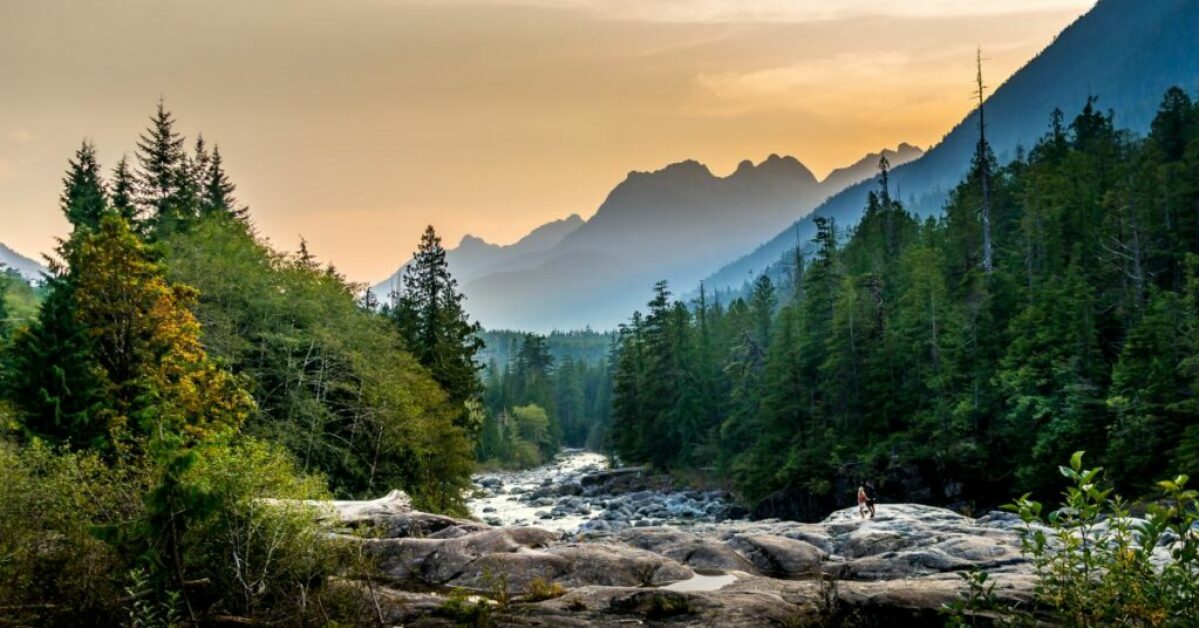Exploring Vancouver Island
What is Vancouver Island?
In the Pacific Ocean of British Columbia, a wild and remarkable island stretches 456 km along the coastline. Known as Vancouver Island, this outdoor hotspot is famed for its natural richness and diversity. The island is characterized by old-growth temperate rainforests, a rugged wind-blown coastline, and countless species of impressive wildlife.
Tourists visit Vancouver Island to catch a glimpse of a black bear or the North American cougar, both of which inhabit the island in their thousands. People take to the waters to surf the powerful swells on the Pacific coast or to watch breaching whales and sea lions coursing through the nutrient-dense waters. Vancouver Island is a place that celebrates the outdoors and welcomes anyone who wishes to embrace adventure.
How do you Get There?
Much of Vancouver Island is inaccessible wilderness. For most travelers, a ferry is the best option for reaching the island as either a foot passenger or in a vehicle.
Many choose to take a BC ferry from Vancouver City (Horseshoe Bay or Tsawwassen terminals) on the mainland to reach Victoria or Nanaimo on Vancouver Island. Alternatively, travelers from the United States can catch the Coho Ferry via the marine border from Port Angeles in Washington State to Victoria.
Another option to reach the island would be short-haul flights to Victoria or Nanaimo. For the adventurous, a floatplane to one of the 10,000 lakes or coastal waterways in a remote part of the island is possible!
Once on the island, you can take busses, but it’s advisable to take your own vehicle to free up your options for exploration. The main highway from Port Hardy to Victoria runs up the east coast and can be driven in 5.5 hours.
A network of logging roads branches off to the west and wind their way into the heart of the island. A 4×4 is a good idea to allow you to access the muddy and waterlogged roads in the depths of the island.
Things to See?
A good place to start your Vancouver Island adventure is in Victoria, the historic colonial capital. Here you can admire the grand stone buildings, book whale watching tours, and sample a range of spectacular seafood dishes.
Many outdoors lovers visit Vancouver Island to complete the West Coast Trail in the Pacific Rim National Park. The nearby Juan de Fuca Provincial Park is also well worth a visit. For wave hunters, the trendy towns of Tofino and Ucluelet offer the opportunity to surf the turbulent waters of the Pacific Coast.
Kayaking, fishing, off-roading, wildlife watching, hiking, mountain biking, and skiing are just a sample of the activities you can enjoy on Vancouver Island. For a truly wild experience, head north to Campbell River and Port Hardy to get truly off-grid.
Top Hikes in Vancouver Island
The 75 km West Coast Trail is a beast of a hike. It’s lauded as one of the best long-distance hiking trails in the world. However, be warned, it’s not for the inexperienced. The terrain is slick with mud, the trails drenched with water. Tidal crossings are required, you need to camp in the backcountry, and you must contend with everything from growling grizzlies to hordes of mosquitos.
For a tamer option, head to Botanical Beach and the coastal inlets of the Juan de Fuca Provincial Park or the Wild Pacific Trail in Ucluelet. Sooke is another great place to hike with the Iron Mine Bay trail providing you with a sample of rainforest and coastal ecosystems. Vancouver Island is mountainous and there are some fantastic summit hikes to attempt including Mount Work, Mount Benson, and Mount Manuel Quimper.
Where to Stay?
Vancouver Island has a laid-back attitude to wild camping. Many hikers pitch up in the backcountry and head off trail for their adventures. The van life community is thriving on Vancouver Island with endless opportunities to park up for the night. If you do go van camping, make sure you know the rules as some beaches and National Park car parks don’t allow campers.
Eco retreats are booming on Vancouver Island. Anyone who wants to detox on an island retreat can opt for a range of forest or beach getaways such as Clayoquot Wilderness Resort or the Wickaninnish Inn. The island has a prominent First Nations history with some cultural stays also open to exploration such as at the Wya Point Resort.
The bigger towns like Victoria and Nanaimo have a variety of accommodation options; but, to get the most of Vancouver Island, you want to explore much farther than what these cities offer.
What to Pack?
Vancouver Island is technically covered in dense rainforest. This of course means precipitation is extremely high. The climate is mild, but the rains are torrential! There is often a thick sea mist veiling the coastline, the forests are constantly dripping, and the waterways are always gushing. It’s an ecosystem that’s nothing short of spectacular.
Therefore, the most important item to pack is waterproofs. In this case, a waterproof jacket isn’t enough. You also need waterproof pants, a waterproof cover for your backpack, and sturdy water-tight boots.
If you are planning on doing backcountry hiking, pack accordingly. Don’t forget your bear spray—an essential item on Vancouver Island. You may want to invest in a GPS device to help with trail navigation. GPS devices can also send an SOS beacon if you get into trouble. This is particularly valuable on the island where phone signal is often a problem.
Bonus Tips for Vancouver Island
The best way to see Vancouver Island is by visiting on a road trip. That way, you can pack a surfboard, wet suit, and all your hiking gear into your van and hit the road. If anything, driving throughout the scenic back roads of the island only adds to the adventure!


